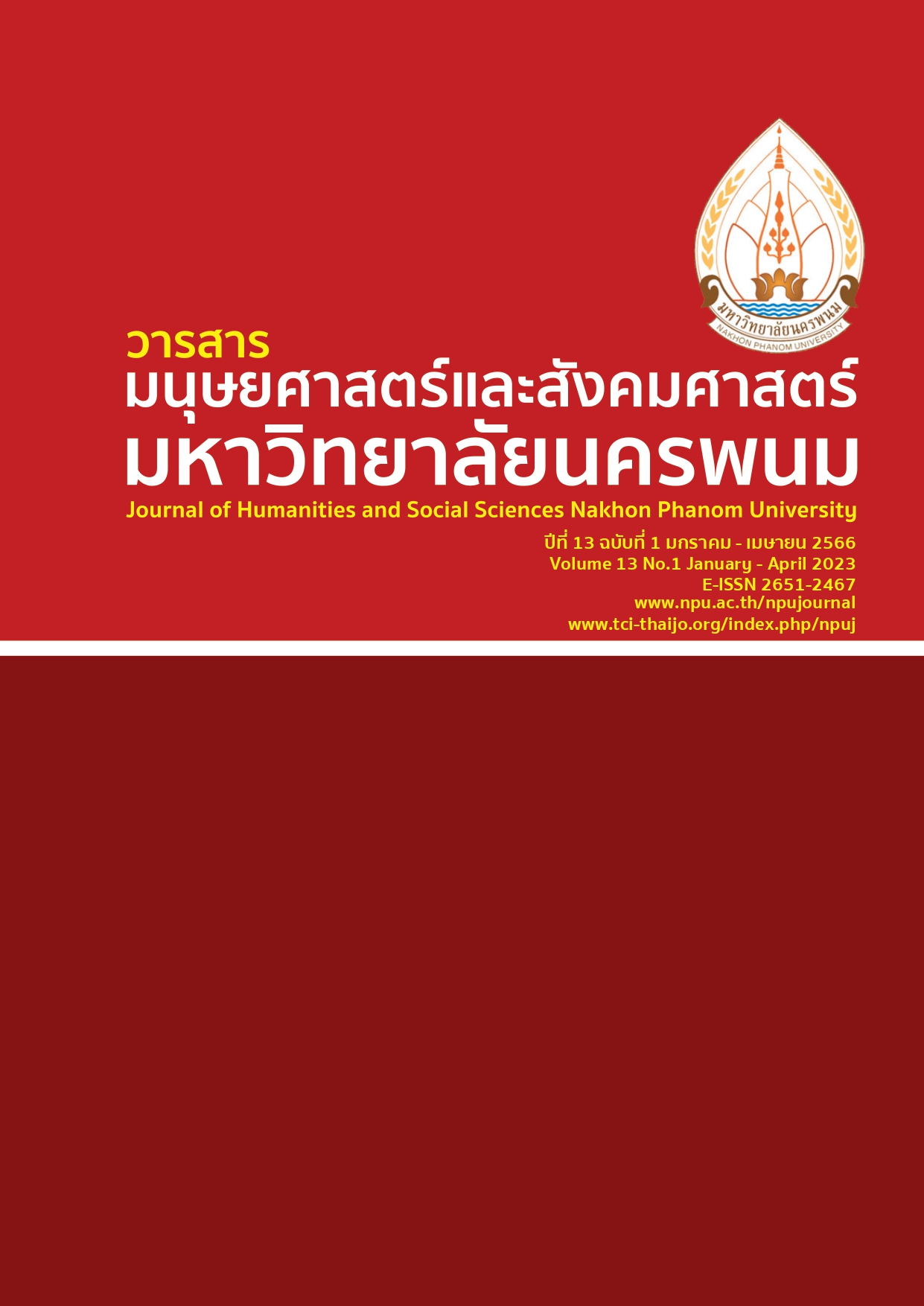A Model of Creative Learning Environment Development for One Tambon One School in Khon Kaen Province
Main Article Content
Abstract
The research objectives aimed to 1) investigate the components and indicators of creative learning environment, 2) verify the consistency between the indicators model of creative learning environment with the empirical data, and 3) propose a model of creative learning environment development for One Tambon One School in Khon Kaen province. The sample were 320 school administrators and teachers of One Tambon One Schools under the Office of Khon Kaen Primary Educational Service Area 2, using multi-stage random sampling. The research instrument was a 5-rating scaled questionnaire with 0.793 reliability. The data were analyzed using descriptive statistics and confirmatory factor analysis with Mplus7. The draft of the model was developed by documentary research and the model was evaluated by the 7 experts. The research results revealed that 1) the creative learning environment consisted of 4 components and 12 indicators; (1) creative learning resources consisted of 3 indicators; (2) positive learning activities consisted of 3 indicators; (3) Freethought consisted of 3 indicators; and (4) learning community network consisted of 3 indicators. 2) The model of creative learning environment that was developed by the research was consistent with the empirical data with c 2 = 30.683, df= 20, p-value = 0.0595, RMSEA= 0.041, SEMR = 0.016, CFI = 0.997, and TLI = 0.992. 3) A model of creative learning environment development for One Tambon One School in Khon Kaen Province was appropriated and useful at the highest level and the feasibility level was at a high level.
Article Details

This work is licensed under a Creative Commons Attribution-NonCommercial-NoDerivatives 4.0 International License.
References
Amornwiwattana, S. (2000). Patirūp kānrīanrū phū rīan samkhan thīsut [Learning Reform, Learners is the most important]. Bangkok : Kuruspa.
Charadpet, P. (2018). Kānčhat saphāpwǣtlō̜m thāng kāiyaphāp phāinai hō̜ng rīan khīan bǣp thī song phon tō̜ khwāmkhit sāngsan khō̜ng naksưksā sākhā wichākān ʻō̜k bǣp toktǣng phāinai sathāban bandit phatthana sinlapa [Organizing the Physical Environment within Sketching Classes That Affect the Creativity of Interior Design Students of Bunditpatanasilpa institute (Unpublished master’s thesis)]. Bangkok University, Bangkok, Thailand.
Cronbach, L. J. (1970). The evolution of research. New York : Harper Collins.
Eliseeva, E. (2020). Creative Learning Environment: Concept, Requirements, Characteristics. International Journal of Applied and Fundamental Research. Retrieved September 2020, from http://www. science-sd.com/464-25150/.
Hair, J. F., Black, W.C., Babin, B.J. and Anderson, R.E. (2010). Multivariate Data Analysis. (7th ed). New Jersey : Prentice Hall, Upper Saddle River.
Humanists International. (2020). The Freedom of Thought Report. Retrieved January 2021, from https://fot. humanists.international/general-introduction/.
Innoobec. (2019). khrōngkān rōngrīan khunnaphāp pračham tambon (nưng tambon nưng rōngrīan) [One Tambon One School Project]. Retrieved September 2020, from http://1tambon1school.go.th/.
Kalantzis, M. and Cope, B. (2020). Learning Activity. Retrieved December 2020, from https://newlearning online.com/learning-by-design/glossary/learningactivity/.
Kanjanawasee, S. (2019). Thritsadī kānpramœ̄n [Assessment Theory]. (9th ed). Bangkok : Chulalongkorn University Press.
Kedmarn, P. (2020). Chittawitthayā chœ̄ng būak nai khrō̜pkhrūa [Positive Psychology in Family]. Retrieved December 2020, from https://drpanom.wordpress.com/.
Keeves, P. J. (1988). Educational research methodology, and measurement: An international handbook. Oxford : Pergamon.
Khonkaen Primary Educational Service Area Office 2. (2020). Klum nayōbāi læ phǣn, samnakngān khēt phư̄nthī kānsưksā prathom sưksā Khō̜n Kǣn khēt 2 [Policy and Planning Group, Khonkaen Primary Educational Service Area Office 2]. Retrieved September 2020, from https://sites.google.com /site/plankhonkaen2/.
Khonkaen Primary Educational Service Area Office 4. (2020). Rāingān phon kāndamnœ̄n ngān pračham pī 2562. [Annual Performance Report 2019]. Khon Kaen : Plan and Policy Group, Khonkaen Primary Educational Service Area Office 4.
Klinkularb, P. (2016). Khrư̄akhāi kānrīanrū [Learning Networks]. Retrieved November 2020, from https://sites. google.com/site/supoldee/kherux-khay-kar-reiyn-ru.
Meesang, P. (2017). Kānčhat tham phanǣk lō̜ yut kānbō̜rihān sapphayākō̜n bukkhon tām nǣothāng HR Scorecard [Strategic Planning for Human Resources Management according to HR Scorecard guideline]. Bangkok : Office of the Civil Service Commission.
MOOC. (2019). The Development of Environments in A New Learning Community. Retrieved November 2020, from https://lms.thaimooc.org/courses/course-v1:NU+NU010+2018/about.
Movchan, S. (2018). What Makes a Good Learning Environment. Retrieved October 2020, from https:// raccoongang.com/blog/what-makes-good-learning-environment/?platform=hootsuite.
Office of the Basic Education Commission. (2018). Khrōngkān rōngrīan khunnaphāp pračham tambon (nưng tambon nưng rōngrīan khunnaphāp) [One Tambon One School Project]. Retrieved September 2020, from http://1tambon1school.go.th/index2.php.
Office of the Basic Education Commission. (2020a). Kānčhat kitčhakam lǣkplīan rīanrū phonlakā raphat nā rōngrīan khunnaphāp pračham tambon sū khwāmpen lœ̄t [Organizing learning exchange activities and developing One Tambon One School towards excellence]. Retrieved September 2020, from https://www.obec.go.th/archives/309386.
Office of the Basic Education Commission. (2020b). Rōngrīan khunnaphāp pračham tambon nai Khō̜n Kǣn khēt 2 [One Tambon One School under the Khonkaen Primary Educational Service Area Office 2]. Retrieved September 2020, from https://www.obec.go.th/archives/60746.
Office of The National Economics and Social Development Council. (2018). Yutthasāt chāt Phō̜.Sō̜. sō̜ngphanhārō̜ihoksipʻet - sō̜ngphanhārō̜ipǣtsip [National Strategy 2018-2037]. Bangkok : NESDC.
Richardson, C. and Mishra, P. (2018). Learning Environments that Support Student Creativity: Developing the SCALE. Thinking Skills and Creativity, 27(2018),45-54.
Sidhisamarn, S. (2020). Khwāmkhit sāngsan dek Thai thī hāi pai [The lost creativity of Thai children]. Retrieved August 2021, from https://www.thaipbskids.com/contents/5f6188f917d8e5bbee2401a1.
Spree, T. (2016). Creative Learning Environment. Japan : University of the Ryukyus, Art in Education.
Swaine, L. (2018). Freedom of Thought as a Basic Liberty. Political Theory SAGE journals. 46(3),405-25.
Technical Education Development King Monkut's University of Technology North Bangkok. (n.d.). ʻEkkasān prakō̜p kān banyāi rư̄ang sư̄ kān rīan kānsō̜n [Teaching Materials]. Bangkok: KMUTNB.
Theepasuwan, N. (2019). Khrū hǣng ʻanākhot phư̄a phū rīan hǣng ʻanākhot [Teachers of the future for learners of the future]. Bangkok : Information and Communication Technology Center, Permanent Secretary, Ministry of Interior.
TK Park. (2017). Saphāpwǣtlō̜m kānrīanrū sāngsan: sangkhro̜ nǣokhit čhāk bō̜ribot Thai [Creative Learning Environment: synthesize concepts from Thai context]. Retrieved April 2020, from https:// www.tkpark.or.th/tha/articles_detail/334/.
Trueplookpanya. (2020). Kānphatthanā lǣng rīanrū nai rōngrīan [A Development of Learning Resources in Schools]. Retrieved December 2020, from https://www.trueplookpanya.com/education/content/ 85451/-teaartedu-teaart-teamet.
Waldman, C. (2016). Four Elements for Creating a Positive Learning Environment. Retrieved November 2020, from https://all4ed.org/four-elements-for-creating-a-positive-learning-environment/.
Wiratchai, N. (2002). Krabūankān patirūp phư̄a phatthanā khunnaphāp kānrīanrū: kānpramœ̄n læ kānprakan [Reform process to improve learning quality: Assessment and Assurance]. Bangkok : V T C Communications.


